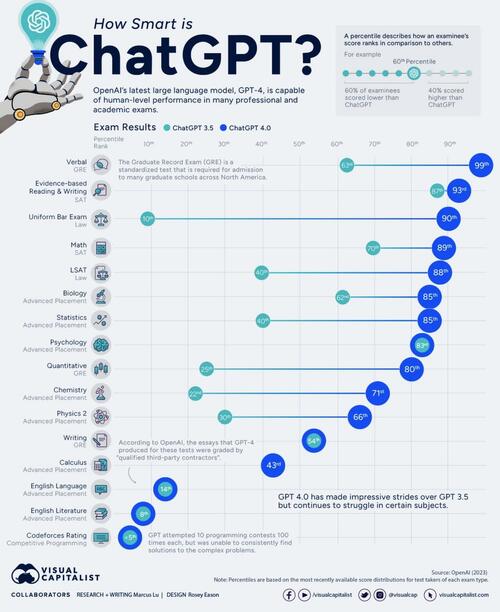Submitted by Jack Raines via Young Money,
In 27 BC, Caesar Augustus was crowned the first Roman emperor. Widely considered one of Rome’s greatest leaders, Augustus’s reign marked the beginning of the 200-year Pax Romana.
One reason that the Roman Empire flourished during this time was its first-class transportation and sewage infrastructure that supported densely-populated cities, with Rome itself boasting an estimated one million residents at its peak.
However, these population centers were also susceptible to epidemics, disease, and lead poisoning (lead was commonly used in pipes, eating utensils, and even food and drinks), yielding high infant mortality rates and low life expectancies (maximum ~33 years).

Low life expectancy + expansive territories meant that the Roman Empire needed high birth rates to maintain enough soldiers to defend its borders, and Rome struggled to keep its birth rates above the population replacement rate. This issue was so important that Augustus offered tax breaks for large families and cracked down on abortion and adultery because he believed that “too many men spent their energy with prostitutes and concubines and had nothing for their wives, causing population declines.”
But government efforts never succeeded in meaningfully increasing birth rates.
At the conclusion of the Pax Romana, low birth rates, combined with plague and war, wreaked havoc on Rome’s population, and the power structure of the empire shifted to the newer Constantinople. Rome never recovered, with the city’s population dwindling from a peak of 1,000,000 residents in the late second century to ~30,000 by 600 AD.
We humans draw parallels and analogies across time and space because they help us better understand the world around us, and no two Western civilizations have attracted more comparisons than the Roman Empire and the United States of America.
Both nations experienced explosions of wealth and eras of unprecedented peace, both nations were the dominant global powers of their respective eras, and today, the US faces the same issue that plagued Rome 2,000 years ago: declining birth rates.
In The Sun Also Rises, Hemingway penned this now timeless exchange:
“How did you go bankrupt?” Bill asked. “Two ways,” Mike said. “Gradually, and then suddenly.”
Ernest Hemingway: The Sun Also Rises
We worry about global warfare and pandemics because they’re big and scary and sudden and could wipe us out with a sudden BANG! But the real existential threat, declining birth rates, will progress like Mike’s bankruptcy: gradually, and then suddenly.
Allow me to demonstrate through some basic arithmetic.
~2.1 children per woman is the typical population replacement rate in a developed country, and the US currently has a total fertility rate (which measures the average number of children that would be born per woman if all women lived to the end of their childbearing years and bore children according to a given fertility rate at each age): of 1.84. This means that (assuming this rate holds constant) every 100 parents will yield 92 children and ~85 grandchildren. And keep in mind, rates have been on a steady decline for years.
It’s a bear market for babies.
This isn’t just a US problem. We’re seeing these trends of sub-replacement fertility rates occurring all over the developed world:
-
South Korea: 1.11
-
Spain: 1.29
-
Japan: 1.39
-
China: 1.45
-
Austria: 1.51
-
Canada: 1.57
-
Germany: 1.58
-
United Kingdom: 1.63
-
Sweden: 1.67
So now you might be thinking, “Okay, declining birth rates ‘sound’ scary, but who cares? Like, why does it matter?”
At the individual level, it doesn’t matter. You have every right to think, “It’s no one else’s business if I don’t have kids!” But once a critical mass of individuals decides not to have kids, there are societal consequences.
In her recent piece, Everything’s a Pyramid Scheme, Katie Gatti Tassin highlighted a logical fallacy in the “retire early” movement:
I’ve long pointed out the fact that financial independence and early retirement cannot exist at scale, because our economic system would cease functioning. If every young person in their thirties or forties achieved financial independence and quit working, the workforce would be limited to those under the age of 35, effectively removing roughly 66% of the current labor force, or the equivalent of about 44 million people…
Of course, there’s a funny redundancy in the system: If 44 million working-age people retired en masse and ceased most discretionary spending…corporate profits would drop, the stock market would stutter to a halt, and the returns required to support early retirement would vanish, driving everyone back to work.
Katie Gatti Tassin
Basically, retiring early works for individuals, but it could never work at scale because our economy would collapse without enough workers to keep it functioning smoothly. The Financially Independent, Retire Early (FIRE) movement only works as long as the majority of society fails to FIRE.
Now, back to the babies.
One big reason that our advanced and wealthy societies have become so advanced and wealthy is that growing populations created a growing labor force which, coupled with technological advancements, powered growing economies and widespread wealth creation.
And now, our advanced, wealthy societies have devised systems that allow folks to retire and live their golden years in relative ease and decadence thanks to a combination of personal savings/investments and social safety nets.
These social safety nets are supported by taxes, which are funded by taxpayers, aka workers. And our number of workers has been steadily increasing since the Industrial Revolution.
But now people are having fewer kids, meaning that down the road, we’ll have fewer workers. And when life expectancies are higher than ever while birth rates are lower than ever and everyone still wants to retire on time… well, you see where I’m going with this? The math doesn’t add up.
(Katie actually made this same observation to highlight the absurdity of individualism).
So not to be a complete doomer here, but it feels a lot like we’re climbing the initial ascent on a rollercoaster, and we’re about to hit the apex.
What does the descent look like? I don’t really know, because we haven’t actually seen a large-scale population decline in the modern era, but I imagine it would go something like this:
-
Social programs that we take for granted will no longer be feasible.
-
People will have to work longer (you’re already seeing protests about this in France after the pension reform).
-
Stock and real estate markets will decline as lower populations reduce consumer demand, hurting corporate profits and property values.
So after considering why declining birth rates matter, I had another question: Why, given the risks associated with birth rate declines, are we still experiencing said declines in developed countries?
Like, this problem is pretty obvious, so why aren’t we making more babies?
I have a few hypotheses:
1) Kids are expensive (both in perception and reality).
The US Department of Health & Human Services estimates that the average family with infants would need to pay $16,000 per year to cover the true cost of childcare, and half of US households make less than $70,000 per year. That’s a big chunk of cash going to raising a kid each year.
Besides the real costs, the perceived costs of childcare scale exponentially with one’s social group. Say you’re a high earner, and you and your spouse take home $200k+ per year.
Do you want your kid to attend a private middle school to improve their chances of gaining acceptance to an elite boarding school to ensure they secure a seat in an Ivy League university which will help them land a coveted job on Wall Street?
Are they going to play travel sports and take music lessons and eat organic foods and drive a nice car?
That’s going to cost a lot more than $16,000 per year.
Even high-earners are hesitant to have children because they don’t know if they can afford their desired lifestyle for their kids.
2) Widespread contraceptives.
Thousands of years before Planned Parenthood, the ancient Greeks and Romans discovered this cool plant called Silphium. Silphium had a number of medical uses, but it was most popular for its role as a contraceptive: ingesting a chick-pea-sized dose of Silphium prevented pregnancy.
There was just one problem with Silphium: it could only be grown in a narrow strip of fertile land in present-day eastern Libya. The Romans loved Silphium so much that they overused the wonder plant, eventually driving it extinct.
After the disappearance of Silphium, the world didn’t have an effective, safe contraceptive that could be ingested until 1950, when the birth control pill hit the market.
For the first time in 2,000 years, women controlled when and if they wanted to have children. When we have a high degree of control over the childbirth process, the number of unplanned pregnancies will decline, which means the number of total pregnancies will likely decline too.
3) Everyone, regardless of their sex, is focused on their careers.
100 years ago, it was normal for husbands to go to work while their wives took care of the house and/or raised the children. But now? Everyone works. And kids really throw a wrench in climbing the corporate ladder.
Ambitious women don’t want children to derail their careers, and ambitious men don’t want to step off the fast track to partner to spend a few years as stay-at-home dads. So both sexes delay having kids until they have achieved some threshold of success in their professional lives. But the clock doesn’t stop ticking, and every year spent chasing paper is one year not spent chasing two-year-olds around the house.
4) The Bored Parent Hypothesis.
I have this half-baked idea that one’s number of children is inversely related to their availability of fun/interesting alternative activities. If you are a 20-something living on a few dollars a day in an undeveloped country, you don’t really have many things to do (excluding work) besides creating an army of your own miniature genetic replicas.
But if you live in a developed, first-world country in the Year of Our Lord 2023, you have a lot of ways to spend your time that does not involve making babies. You can enjoy a luxury previously unknown to most of our ancestors: chill with your friends. You can travel for fun, ski, engage in this weird modern phenomenon known as “hobbies,” create art, and learn a foreign language.
You have options.
Subconsciously, we know that children mark the end of this period of vast optionality by introducing a really, really big responsibility. This is the first-world problem of all first-world problems, but I do think that some young people in developed countries today are hesitant to have kids because there’s just a ton of fun stuff to do when you don’t have kids.
Of course, I’m speaking as a young dude in a developed country who thinks there’s a ton of fun stuff that doesn’t involve having kids.
5) There are literally too many potential partners.
While birth rates have been steadily declining, the average age of first marriage has been steadily increasing. These two numbers are related: if you get married later, you literally have less time to have kids.
Something, something, biological clock.
So why are people getting married later? One reason is that the internet has given us a damn-near-infinite number of potential partners.
Historically, guy likes girl, girl likes guy (or the parents arrange the marriage without consulting the kids at all), and then guy and girl get married and have kids.
But now, guy likes girl, girl likes guy, guy refuses to show how much he likes girl while girl plays hard-to-get to keep guy interested, and guy and girl enter a 4-month relationship-adjacent purgatory where they go on dates and sleep together but don’t acknowledge the relationship itself until one party inevitably stops talking to the other party to see what else is out there, and then the whole cycle repeats.
“Dating” looks the way it does today because everyone is replaceable when the dating pool has millions of options. Instead of working through a road bump in one’s relationship, you can treat every minor inconvenience as an opportunity to look for someone “better.”
This weird dating carousel can last for years as we take longer and longer to commit, giving us less and less time to have kids.
The irony of this whole thing is that it was our very economic prosperity that created the conditions that could unwind the whole thing:
-
The desire for everyone to “get ahead” has made it really expensive for your kids to get ahead
-
Medical advancements have allowed us to be tactical with our pregnancies
-
Previously unavailable career opportunities have led many folks to put off having children to pursue those opportunities
-
Our abundance of wealth has provided us with near-limitless entertainment and activities that don’t involve having kids
-
And the internet turned the whole world into a potential dating pool, making commitment next to impossible
And now we face this really weird Prisoner’s Dilemma:
Any individual person can delay having children to enjoy our abundance of everything, and their world will function just fine. But if every individual person neglects to have kids any time soon, the whole system grinds to a halt. The only way to ensure that everyone wins is by everyone having more kids.
Maybe society really is just one big pyramid scheme.
So I guess we should probably start having more kids. Or at least y’all should, anyway. I don’t really want to be part of the solution anytime soon, respectfully.
– Jack














